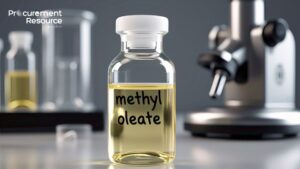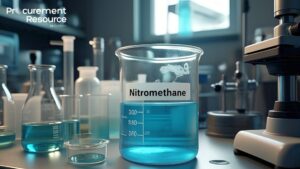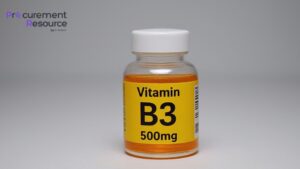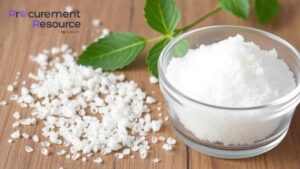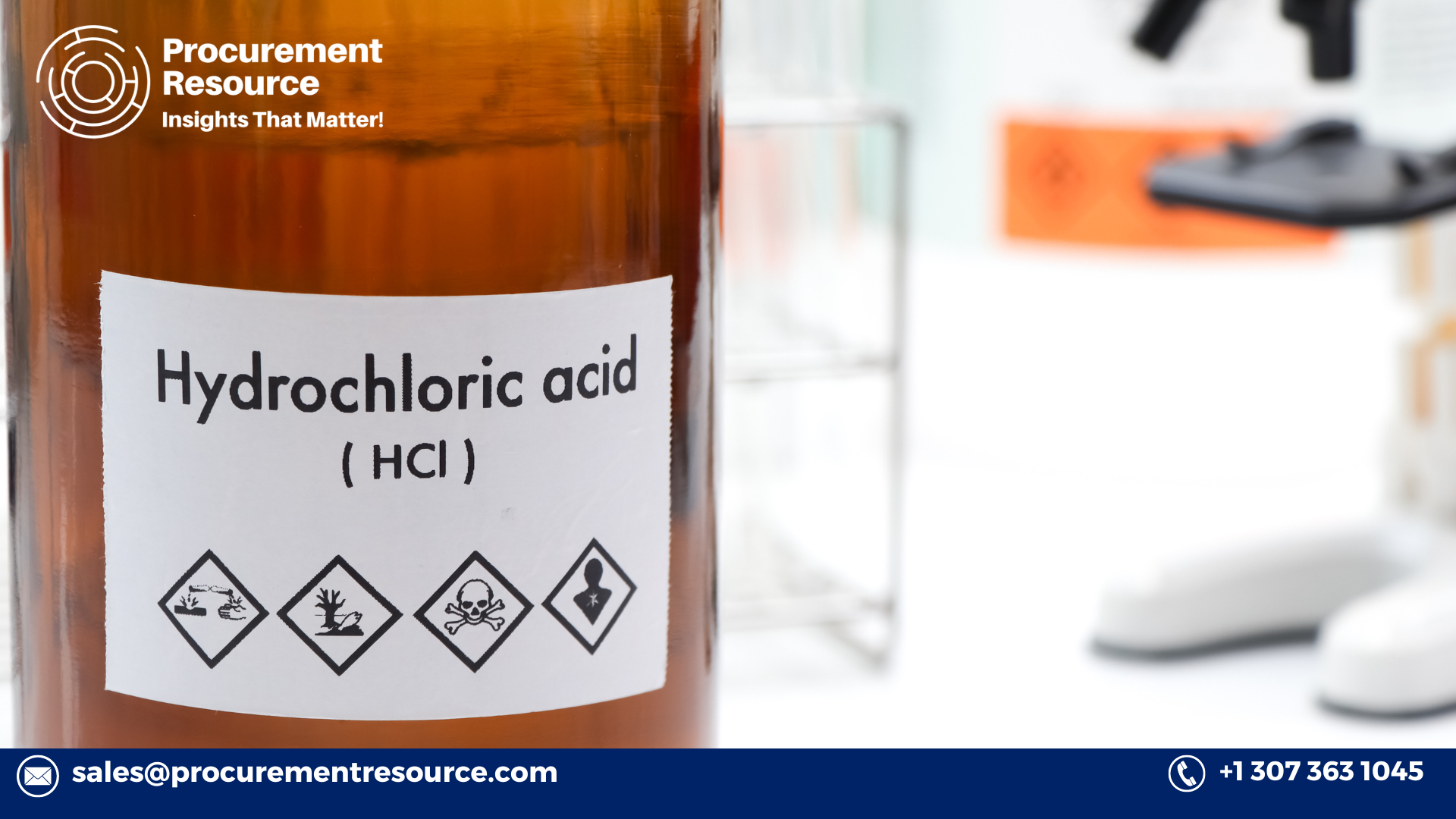
Hydrochloric acid (HCl) is a vital chemical with a wide range of industrial applications, including steel pickling, production of organic and inorganic compounds, pH control, and neutralization processes. The production of hydrochloric acid is a crucial component of the chemical industry, influencing various downstream sectors. This blog delves into the hydrochloric acid production process, examining the manufacturing report, raw material costs, market prices, and the latest news in the industry.
Manufacturing Report and Process
The production of hydrochloric acid can be achieved through several methods, but the most common and industrially significant is the chlor-alkali process. This process involves the electrolysis of sodium chloride (salt) solution, resulting in the production of chlorine gas, sodium hydroxide, and hydrogen gas. The chlorine gas and hydrogen gas are then combined to form hydrochloric acid.
Chlor-Alkali Process
- Electrolysis: The primary step in the chlor-alkali process is the electrolysis of brine (sodium chloride solution). When an electric current is passed through the brine, it dissociates into chlorine gas (Cl₂), hydrogen gas (H₂), and sodium hydroxide (NaOH).
- Formation of Hydrochloric Acid: The chlorine gas produced in the electrolysis step is then reacted with hydrogen gas in a direct synthesis reaction:
This reaction takes place in a specially designed burner or reactor, typically at high temperatures. The resulting hydrochloric acid is usually in the gaseous state and can be absorbed in water to produce aqueous hydrochloric acid of various concentrations.
- Purification and Concentration: The hydrochloric acid gas can be absorbed in water to produce solutions of desired concentrations. Further purification steps may be taken to remove any impurities and ensure the acid meets industry standards.
Request For Sample: https://www.procurementresource.com/production-cost-report-store/hydrochloric-acid/request-sample
By-Products and Environmental Considerations
The chlor-alkali process also produces by-products such as sodium hydroxide, which is valuable in its own right. Environmental considerations are crucial, as the process involves handling and disposing of chlorine and other hazardous materials. Proper containment, scrubbing systems, and waste management practices are essential to minimize environmental impact.
Raw Material Costs
The primary raw material for hydrochloric acid production is sodium chloride (common salt). Other significant inputs include water and electricity for the electrolysis process. The cost of raw materials can fluctuate based on various factors, including:
- Sodium Chloride: The price of salt can vary depending on the source, extraction methods, and transportation costs. The availability and price of salt are influenced by geographic location and market demand.
- Electricity: The electrolysis process is energy-intensive, making electricity a major cost component. The cost of electricity can vary widely based on the region, energy policies, and supply conditions.
- Water: Water used for brine preparation and acid absorption must be of high purity to prevent contamination and ensure efficient electrolysis.
- Hydrogen Gas: In some processes, hydrogen gas is sourced externally, adding to the overall production cost.
Cost optimization strategies, such as energy-efficient technologies and raw material procurement agreements, play a critical role in managing production expenses.
Hydrochloric Acid Market Price, Hydrochloric Acid Price Per Ton
The market price of hydrochloric acid is influenced by several factors, including raw material costs, production capacity, demand from various industries, and global economic conditions. The price per ton of hydrochloric acid can vary based on concentration, purity, and regional market dynamics.
Factors Affecting Market Prices
- Demand and Supply: The demand for hydrochloric acid is driven by its applications in industries such as steel, chemicals, oil and gas, and food processing. Any fluctuations in these industries can impact the market price of hydrochloric acid.
- Production Capacity: The global production capacity and availability of hydrochloric acid influence its price. New production facilities or shutdowns of existing plants can cause supply shifts.
- Raw Material Prices: Changes in the cost of raw materials, particularly sodium chloride and energy, directly affect the production cost and subsequently the market price of hydrochloric acid.
- Regulatory Environment: Environmental regulations and safety standards can impact production costs and market prices. Stricter regulations may increase production expenses, influencing the final price.
Current Market Trends
As of the latest reports, the price of hydrochloric acid varies by region and concentration. For example, the price of industrial-grade hydrochloric acid typically ranges from $150 to $250 per ton, while higher purity grades used in the food and pharmaceutical industries can fetch prices upwards of $400 per ton.
Latest News
Innovations and Technological Advancements
Recent advancements in hydrochloric acid production technology focus on improving energy efficiency and reducing environmental impact. Innovations in electrolysis cell design, waste heat recovery systems, and brine purification techniques are helping manufacturers achieve cost savings and sustainability goals.
Market Dynamics and Strategic Developments
- Mergers and Acquisitions: The hydrochloric acid market has witnessed several mergers and acquisitions, with major chemical companies acquiring smaller players to expand their market share and production capacity. These strategic moves aim to strengthen their presence in key regions and diversify product portfolios.
- Expansion Projects: Leading manufacturers are investing in capacity expansion projects to meet growing demand from various industries. New production facilities and modernization of existing plants are part of these efforts.
- Sustainability Initiatives: Environmental sustainability is becoming a focal point for hydrochloric acid producers. Companies are adopting cleaner production technologies, optimizing resource utilization, and enhancing waste management practices to minimize their ecological footprint.
Impact of Global Events
Global events such as the COVID-19 pandemic and geopolitical tensions have affected the hydrochloric acid market. Disruptions in supply chains, fluctuations in raw material prices, and changes in industrial activity have led to market volatility. However, as industries recover and stabilize, the demand for hydrochloric acid is expected to rebound.
Regulatory Changes
Regulatory changes related to environmental protection, safety standards, and chemical handling can impact the hydrochloric acid industry. Compliance with new regulations may require investments in technology upgrades and process modifications, influencing production costs and market prices.
Conclusion
The hydrochloric acid production process is a cornerstone of the chemical industry, with wide-ranging applications and significant economic importance. Understanding the manufacturing process, raw material costs, market prices, and latest industry trends is crucial for stakeholders in the hydrochloric acid market. As technological advancements and sustainability initiatives continue to shape the industry, staying informed about these developments will be key to navigating the dynamic landscape of hydrochloric acid production and market dynamics.


